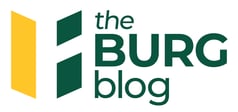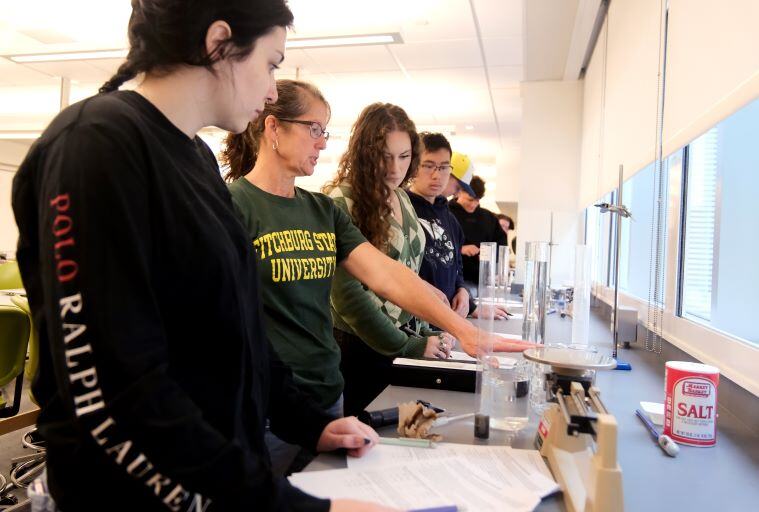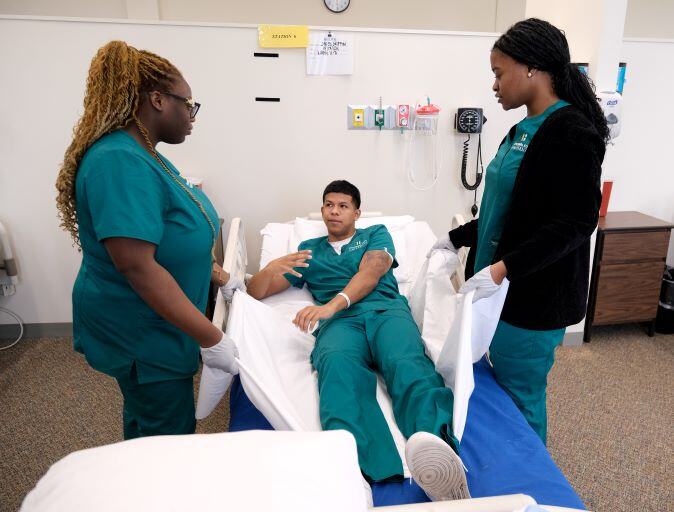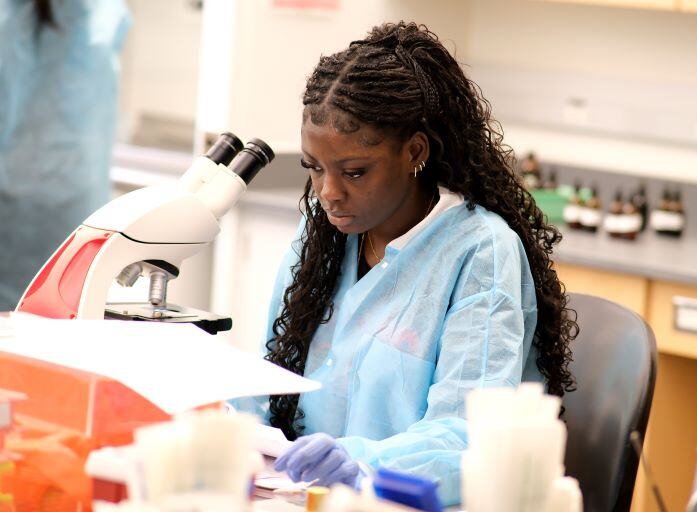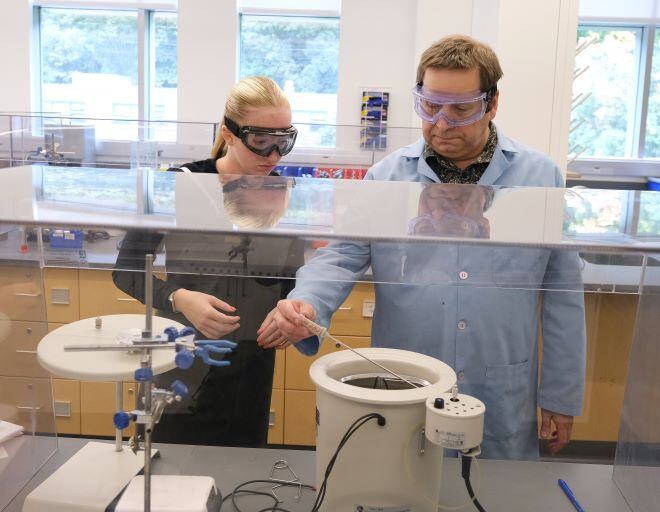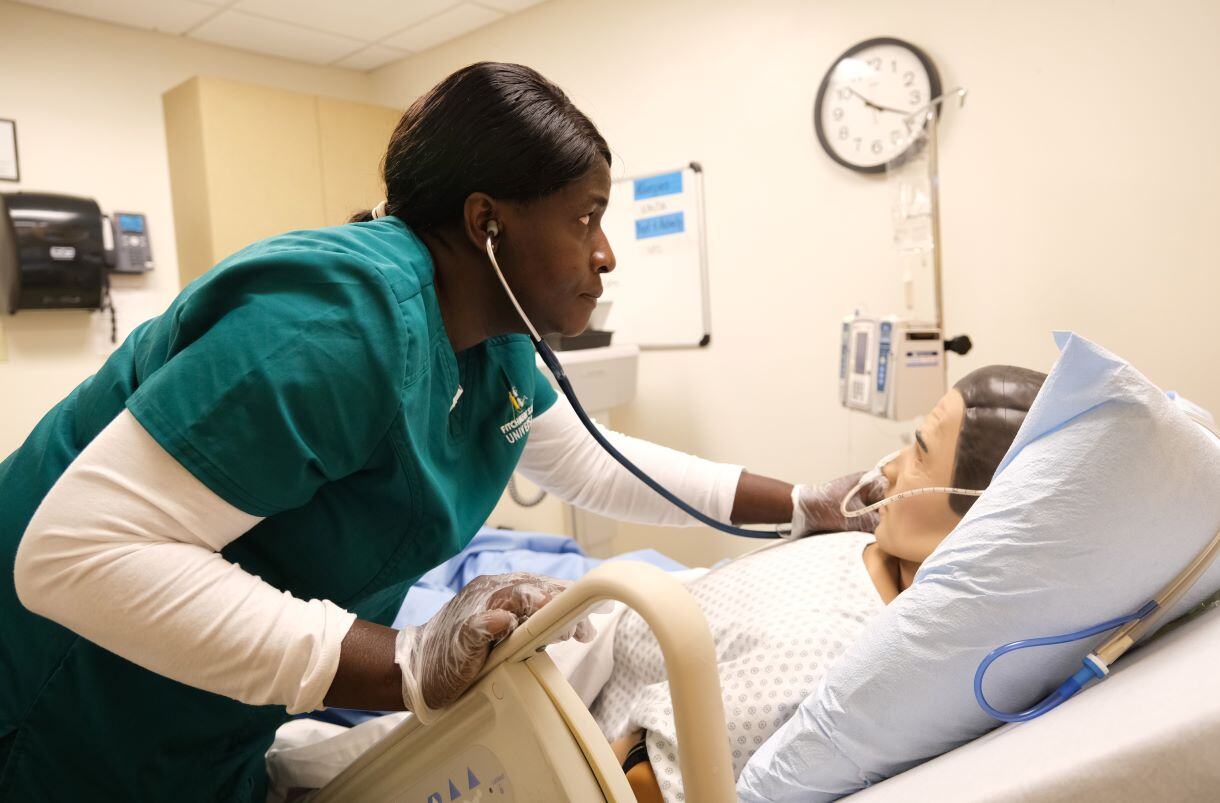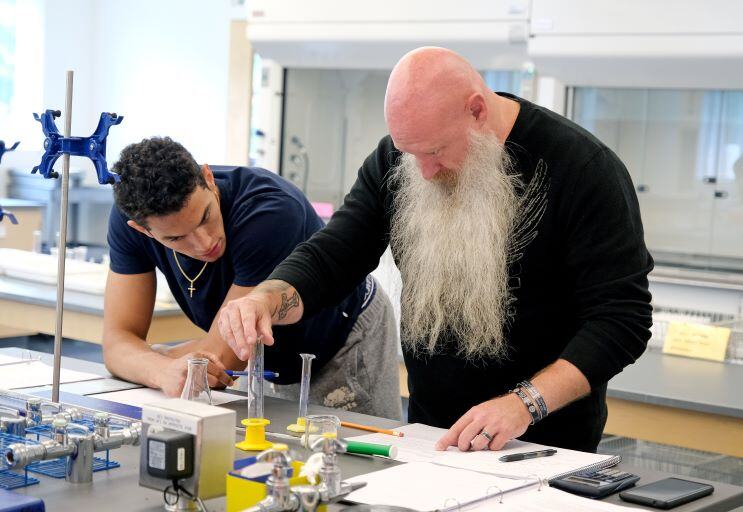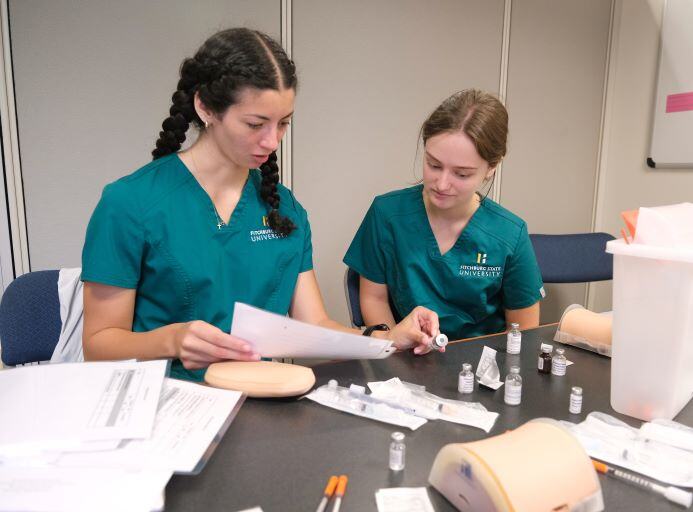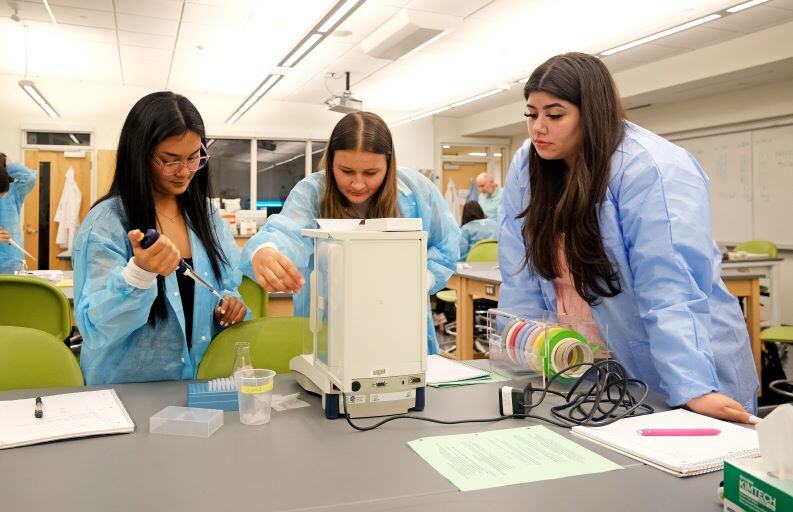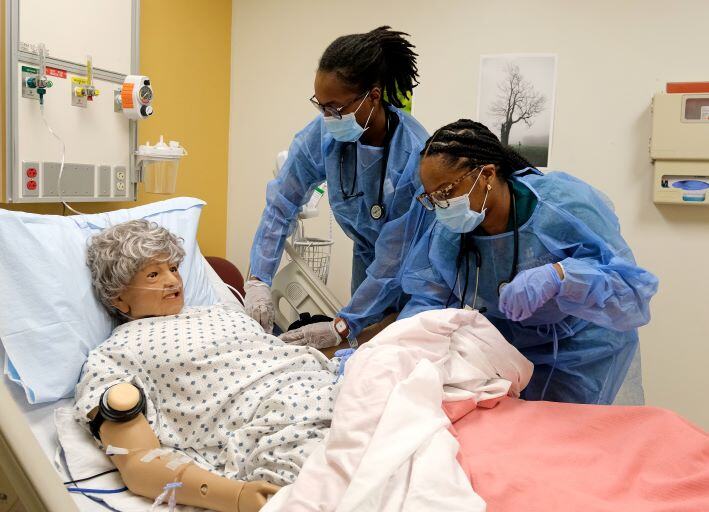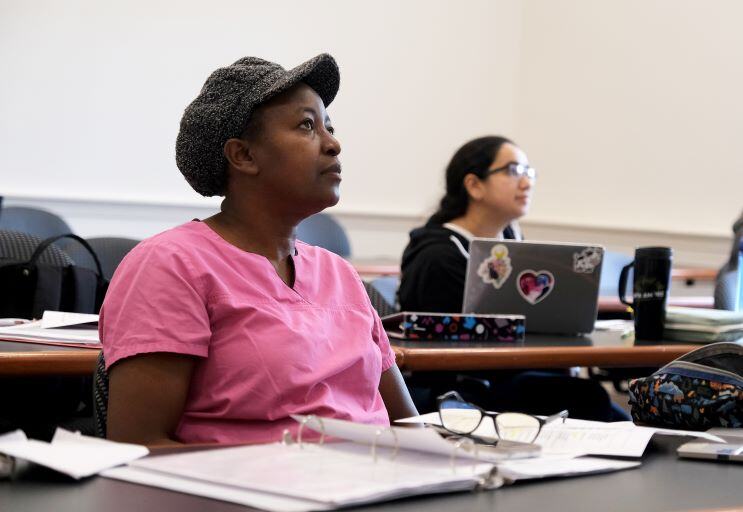Students in Earth and Geographic Sciences Professor Elizabeth Gordon's Oceanography class learn about the density and salinity of seawater in the Antonucci Science Complex. This course is designed to provide students with an overview of fundamental scientific concepts that describe ocean processes. Topics include marine geology (ocean basins, sediments), marine chemistry (properties of seawater), and physical oceanography (waves, tides, currents), with some discussion of biological oceanography.

